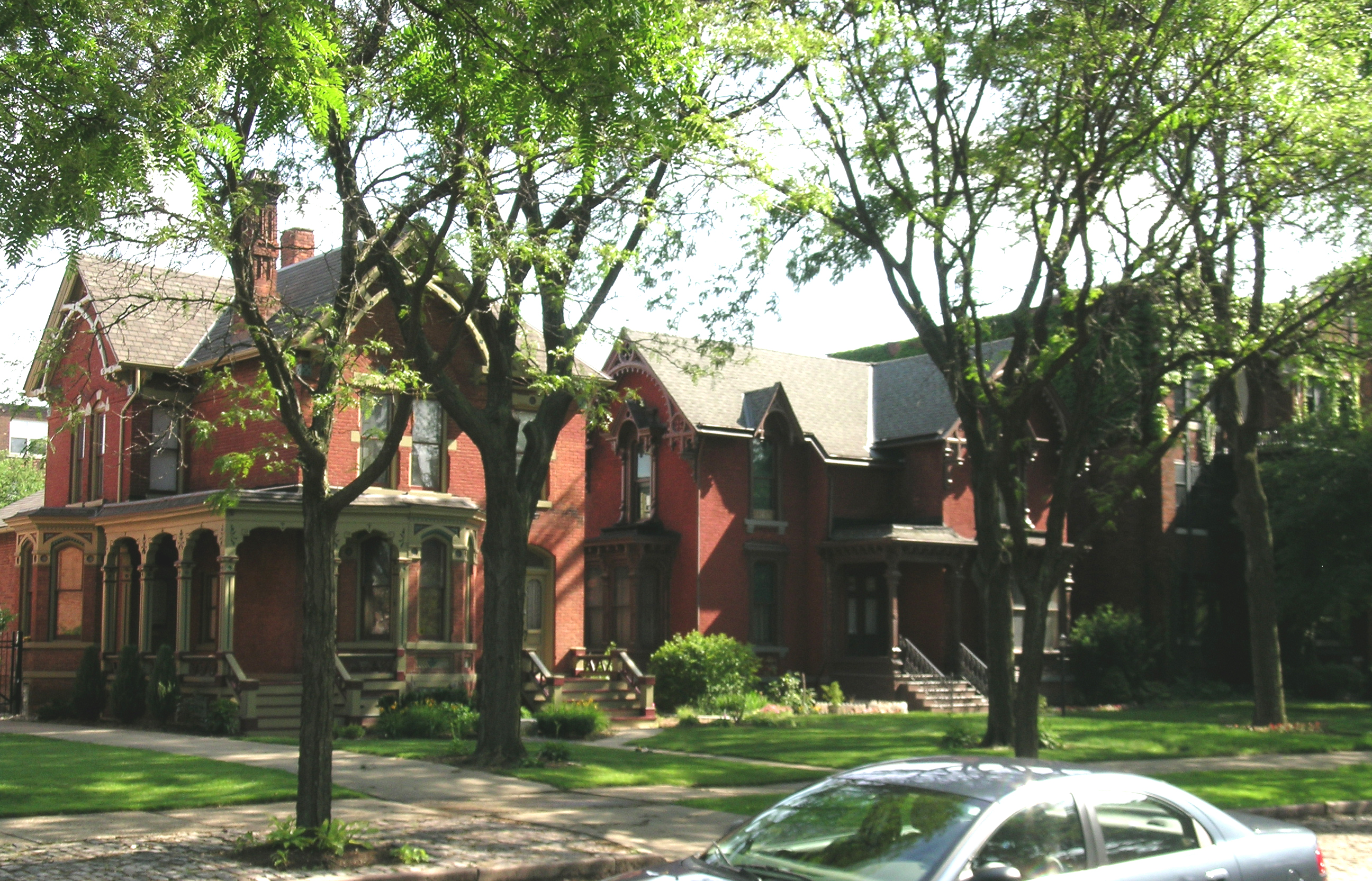- West Canfield Historic District
Infobox_nrhp | name =West Canfield Historic District
nrhp_type = hd

caption = Houses on West Canfield
location=Detroit, Michigan
lat_degrees = 42
lat_minutes = 21
lat_seconds = 3
lat_direction = N
long_degrees = 83
long_minutes = 4
long_seconds = 4
long_direction = W
locmapin = Michigan
area =
built =1871
architect=
architecture= Queen Anne
added =May 27 ,1971 ;September 22 ,1997 (boundary increase)
governing_body = Local
refnum=71000433, 97001092 (boundary increase)cite web|url=http://www.nr.nps.gov/|title=National Register Information System|date=2008-04-15|work=National Register of Historic Places|publisher=National Park Service]The West Canfield Historic District is an historic district located primarily on Canfield Ave. between Second and Third Streets in
Detroit ,Michigan . A boundary increase enlarged the district to include buildings on Third Avenue between Canfield and Calumet.History
The area around the West Canfield Historic District was once owned by
Lewis Cass , an early governor of Michigan. [http://www.ci.detroit.mi.us/historic/districts/west_canfield.pdf West Canfield Historic District] from the city of Detroit] When he died in 1866, his two daughters inherited his holdings. [http://detroit1701.org/West%20Canfield_Hist.htm West Canfield Historic District] from Detroit1701.org] Three years later, they divided the property, with Cass's daughter Mary receiving the portion where the West Canfield Historic District is now located. Mary's husband was Captain August Canfield, a graduate of West Point and a major investor in the construction of the ship canal at Sault Ste. Marie. In 1871, Mary Cass Canfield subdivided her land, naming Canfield Avenue in honor of her husband.In the early 1870s, numerous brick Queen Anne homes were constructed along Canfield, on spacious lots with generous setbacks. The original platting specified that each lot would measure 50 by 190 feet, and that there would be "a 30 foot setback for sidewalk, shrubbery, and ornamental purposes." [http://www.nps.gov/history/nr/travel/detroit/d25.htm West Canfield Historic District] from the National Park Service] The street was poplated by prosperous attorneys, physicians, dentists, architects, and other professionals. Construction continued into the 1880s. The street remained a prime residential location in Detroit for decades. However, the
Great Depression led to a decline in the neighborhood.This decline was reversed in the 1960s as the homes were renovated. In addition, the street was narrowed and returned to its original design with granite pavers, reproduction street lamps were installed, trees were planted, and grassy medians were added. In 1970, the District received state and local historical designation, the first district so recognized in the city. The district was placed on the
National Register of Historic Places the following year. In 1997, District was expanded to include three buildings on Third Street: one additional Queen Anne style residence and two Victorian commercial buildings.References
Wikimedia Foundation. 2010.
